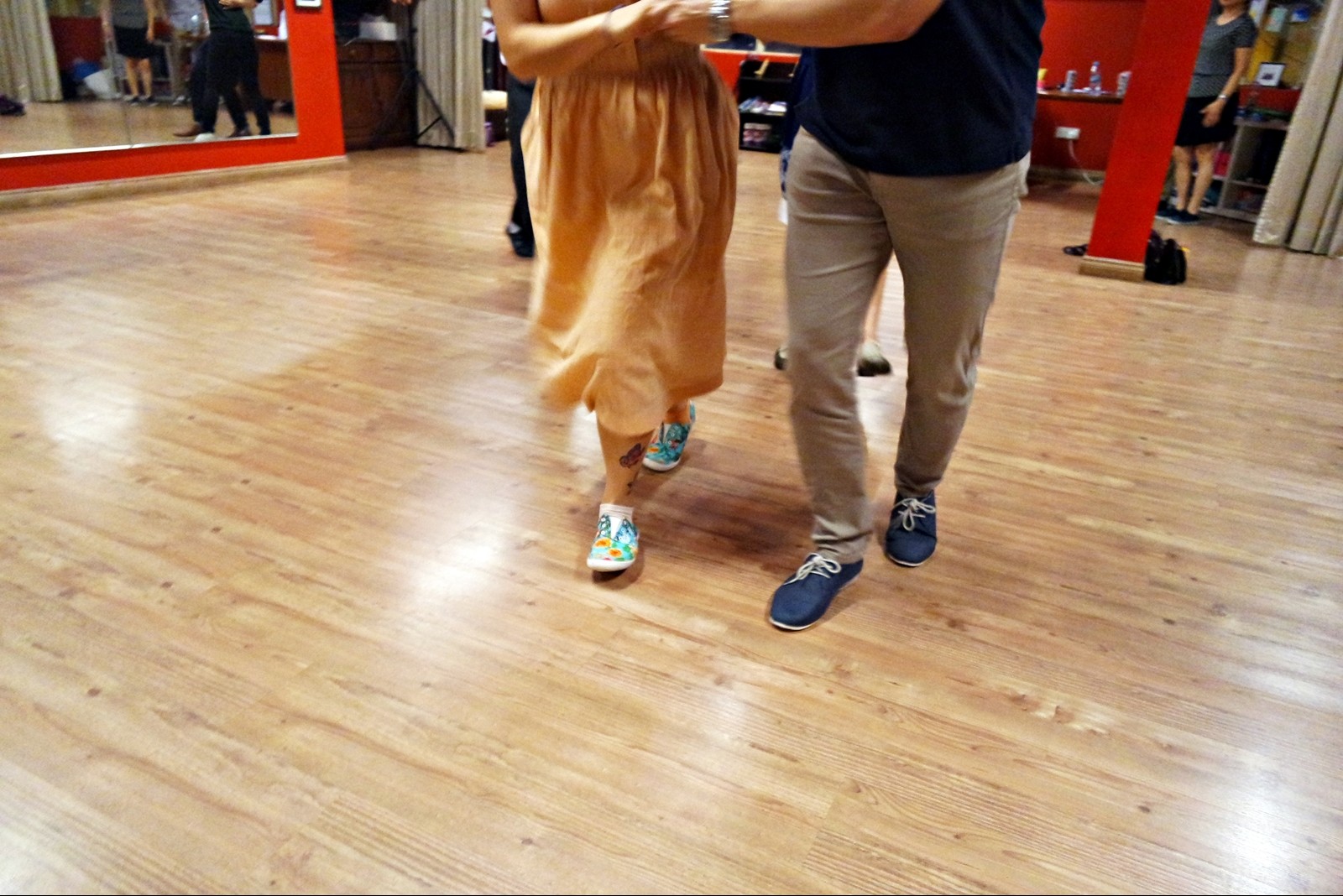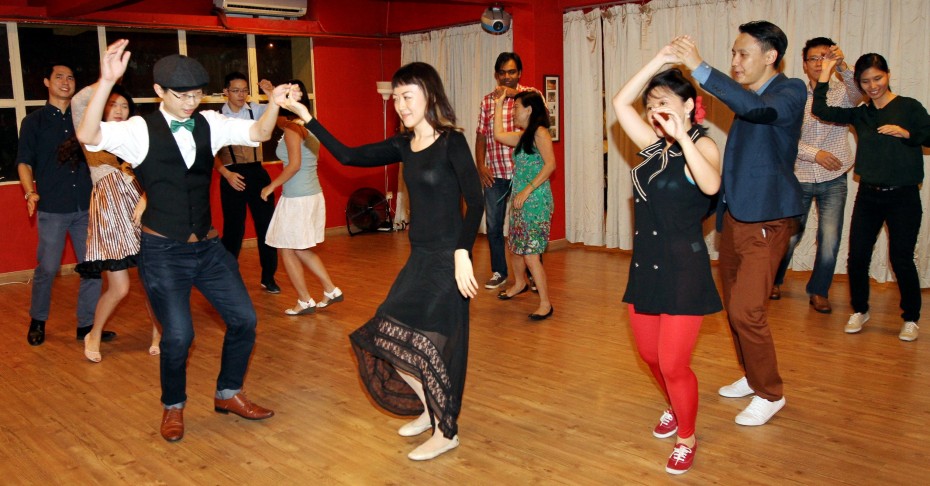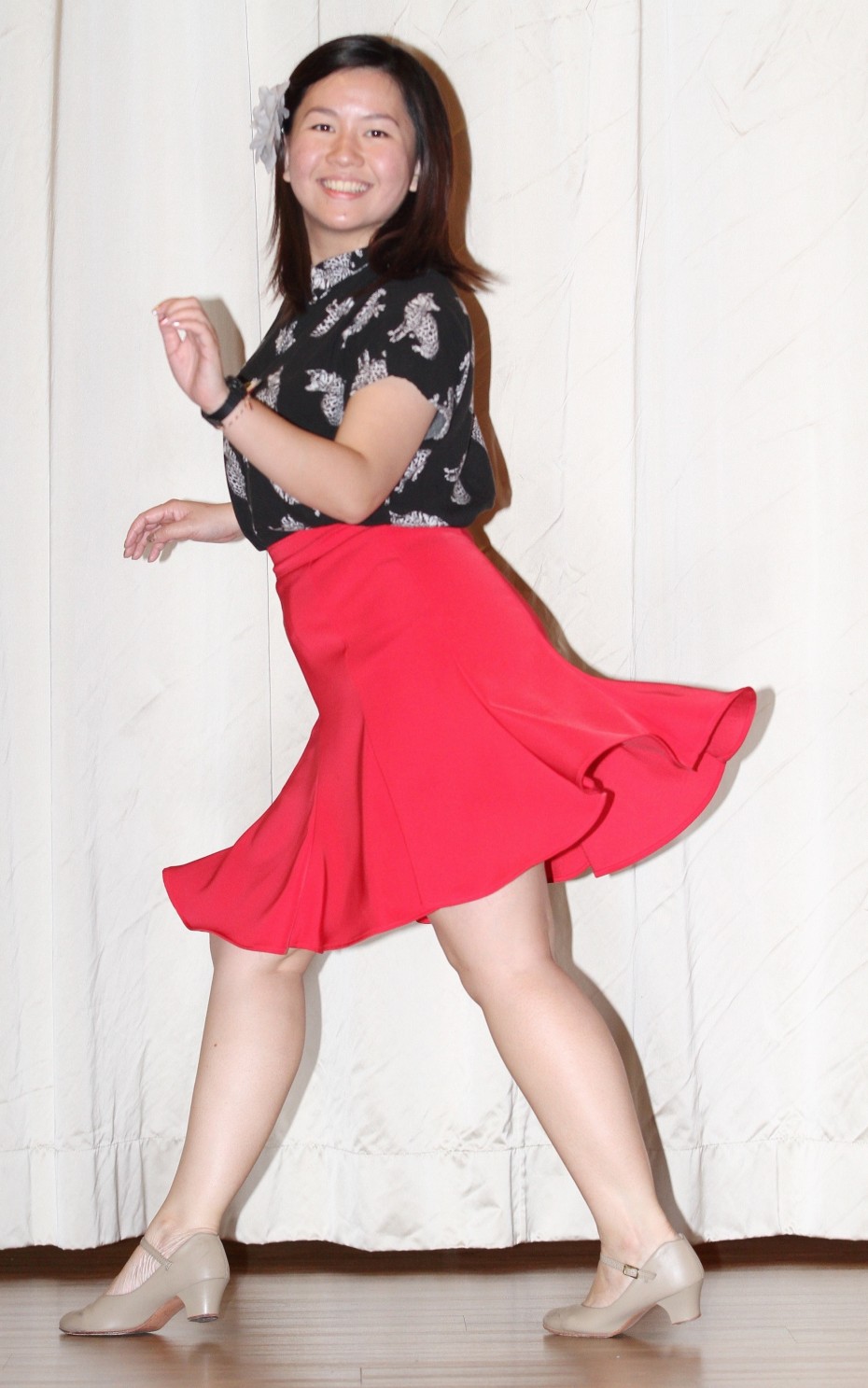Every Friday night, office workers throng a particular restaurant-bar along a row of shophouses in Taman Desa. Everyone is in high spirits as they eat, drink, and laugh the night away, a usual prelude to the weekend.
Around 9pm, a steady stream of young adults go up an unassuming stairway by the side of the restaurant. The women wear flared skirts paired with Keds shoes and the men don long-sleeved shirts with suspenders. They’re not dressed to impress, but for a long night of social dancing.
The stairway leads up to the New Star Studio, where a group of 30-odd people gather for their weekly Lindy Hop session. This particular group calls themselves LindyKL and is helmed by Joanne Khoo, 32 and a handful of core members.
The dance that originated from Harlem in New York City was very popular during the Swing era of the 1920s and 30s. It is a fusion of dances that includes jazz, tap and Charleston, and is usually accompanied by jazz music from the likes of Ella Fitzgerald and Gordon Webster.
In the Klang Valley, this is one of two communities that provide a platform to learn and enjoy the dance.
A step in the right direction
Khoo and her husband Lionel Tan picked up Lindy Hop when they were working overseas. They started LindyKL after returning to the homeland in 2011.
The LindyKL project began with a dance studio in Petaling Jaya before moving to Shivz Grill, Bangsar. A year ago, LindyKL moved to their current location, and so far they have experienced, in Khoo’s words, “nothing but good things.”
“Previously it used to be six to eight people and we couldn’t last through the night. Now we have up to 40 regular dancers every week, lasting until midnight and I have to tell everyone to go home!” said Khoo.
Khoo is an accountant by profession and manages a team at work. She seldom teaches the dance anymore but uses her people management skills to run LindyKL.
LindyKL’s core crew of four permanent members and 20 volunteers aren’t doing it for the money. “This is a passion project. Lindy Hop made us both happy, so we want to share the joy of swing dancing with others,” she said.
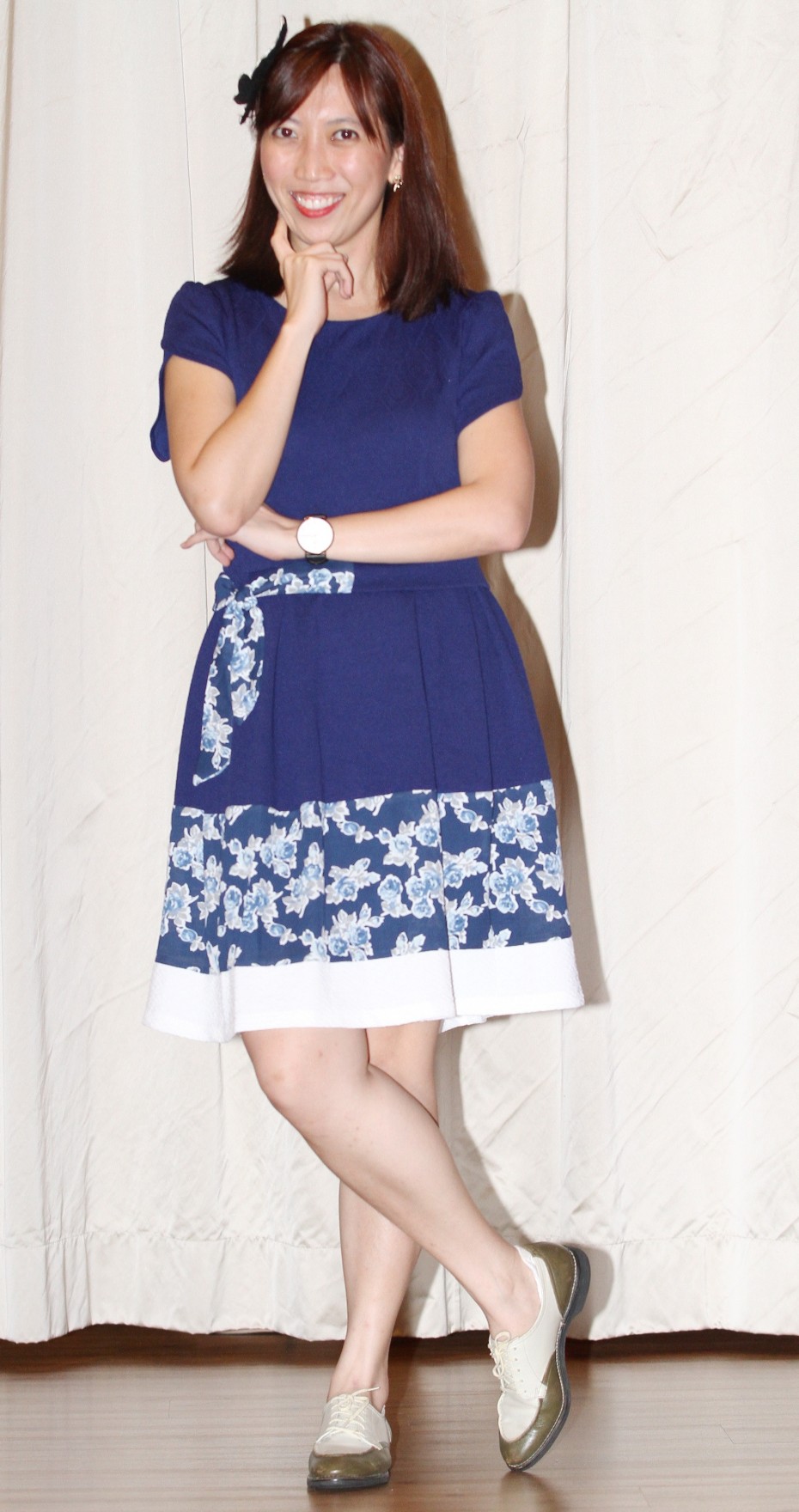
Khoo is running LindyKL as a passion project with minimal financial returns but maximum fun. — Photos: AZLINA ABDULLAH/The Star
“On Fridays we have a free half an hour beginner’s taster class at 9pm, and after that it is the social (a free-for-all dance for dancers of all levels),” she said. They also hold monthly weekend workshops for beginners.
The volunteer teachers at Friday’s taster class aren’t paid, and the RM15 per head that they receive for socials is used for the rental of the dance space. The weekend workshop fees are split between the studio, teachers and a team fund.
“We earn some revenue during performances and corporate gigs – it isn’t much but it’s okay,” she said. “Running LindyKL is kind of like work, but more fun.”
More than just a social event
Most of the participants in LindyKL are young working adults who enjoy swing dancing as a form of stress-relief after a long day at work.
Khoo believes that participants not only learn how to swing dance, but also come to network and make friends. “We attract many young people because they want to experience something new and different, instead of just hanging out at a club.”
“Besides, this is the only place where a guy can hold a girl’s hands without getting into trouble!” she joked.
The sense of community is tight, as the writer observed more and more people coming in throughout the night, greeting each other like old friends and laughing as they boogied on the dance floor.
The social aspect of the dance allows for a more relaxed routine compared to other dances like ballroom dancing or salsa. Although there is some basic footwork to master, a beginner would usually be able to dance comfortably by the end of the night, said Khoo.
“To be good you’ll need three or four months of constant practice. But in just one night, I guarantee that you’ll go from ‘no dancing’ to ‘know dancing’!” she said.
It takes up to two years to have a good solid performance level. And ladies, it’s proven that you’ll be able to pick it up faster than men. “Women can usually dance quite comfortably after a month, whereas men take a few months,” said Khoo.
But there’s a reason behind it. In Lindy Hop, there are two roles – a lead and a follow. The lead decides the moves whereas the follow picks up his or her cues and moves accordingly.
Men usually take longer to learn because most are learning to lead, so in addition to mastering the moves they’ll have to listen to the music and make sure they don’t bump into others. “It’s a little chauvanistic in a way to expect men to lead and women to just follow,” admitted Khoo.
A woman who leads earns a little more respect, said Tan Pei Ru, 26. “People think, if she can lead then it means that she knows what she is doing.” But whether as a lead or follow, new dancers should just let their hair down and not take the dance too seriously.
“The truth is, women are just naturally more comfortable when it comes to dancing, and this inspires men to not freak out as well,” she said.
A dance for introverts
At the taster class, a dozen newcomers are diligently watching the feet of a couple standing in the front.
For most of the attendees, it is their first ever Lindy Hop class. There is an even male-to-female ratio. Some came solo but gamely introduced themselves to a stranger, then proceeded to grab their hands and hold them close, almost in an embrace.
“Rock step, triple step. Rock step, triple step,” Timothy Teoh repeated patiently, as he demonstrated the basic footwork.
Teoh, 31, is a Chief Technology Officer for a social media company. He has been dancing for a little over a year but is already teaching the beginner’s taster classes.
Unlike some of the regulars that night, Teoh is soft-spoken and gives off a shy, bashful vibe. But all that disappears as he confidently demonstrates the “opening” and “closing” swing-outs.
Teoh is a self-declared introvert and admits that the dance has helped him develop a way of connecting with people. “Plus, I am also more aware of my body as I learn to control my movements,” he said.
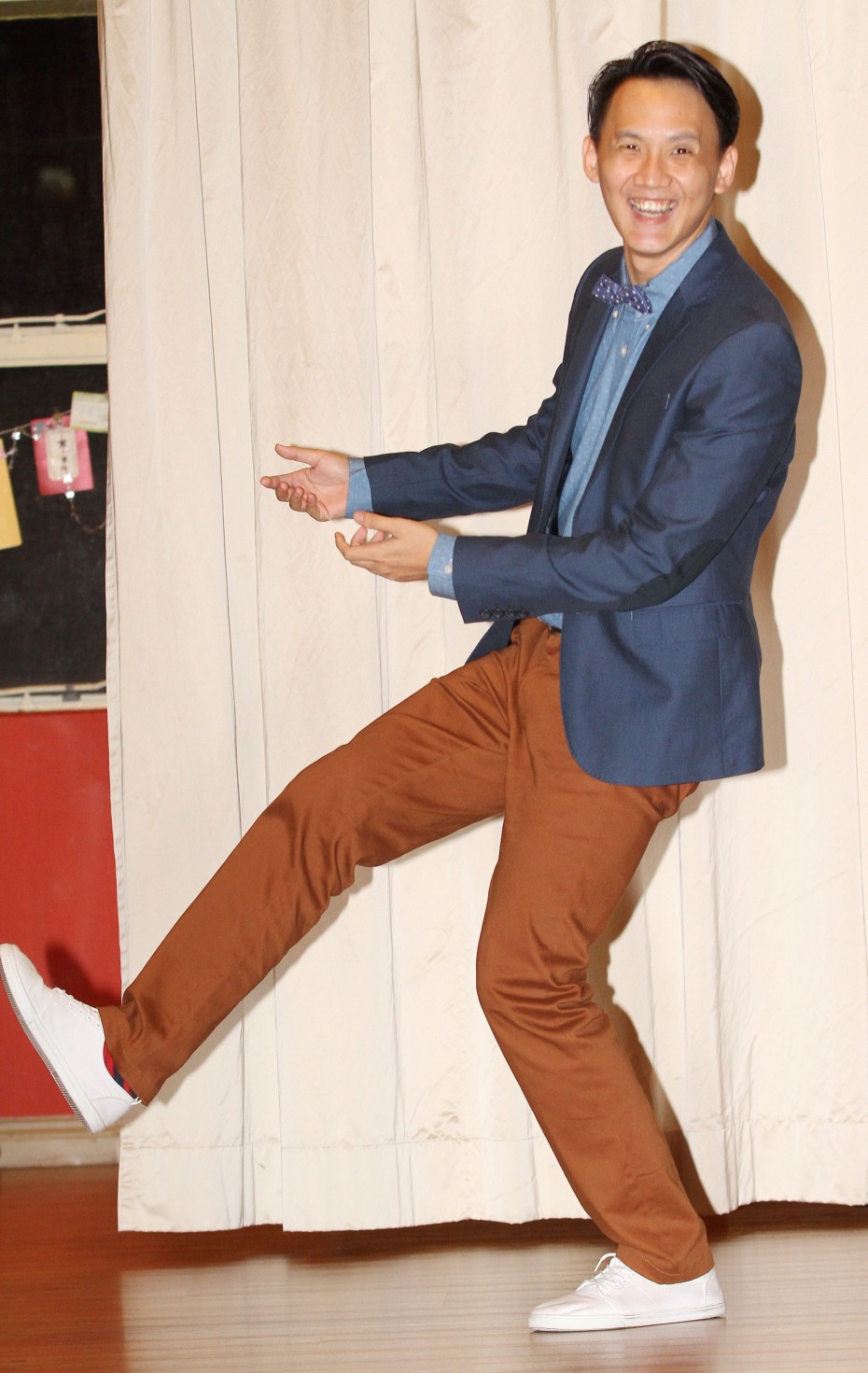
Teoh thought that dancing was something he should to try at least once in his life, and he picked swing dancing.
“People get intimidated with certain dances like salsa, which is quite flashy and sexually suggestive. But Lindy Hop is fun and informal, and you are free to just be yourself,” he said. “That is why so many people are drawn to it.”
Moving to the beat
Although the height of popularity for Lindy Hop was over 80 years ago, the dance has evolved in time to include more contemporary dance elements like hip-hop and ballet.
Abdul Muhaimim, 22, also known as Min, believes that a dance should grow by constantly pushing its boundaries.
“I have met many Lindy Hoppers with different dance styles. I have even seen someone incorporate Latin dance moves into her performance! Personally I want to do something different and surprising with Broadway and hip-hop elements,” he said.
Min is a professional dancer and theatre performer but counts Lindy Hop as one of his favourite performance formats because it lets him play different personas.
“Lindy Hop embodies a lot of musical theatre elements, so it not only makes me want to dance but also sing and act. I believe that there is a lot of room to explore dance-wise when it comes to Lindy Hop,” he said.
Although the scene in the Klang Valley is limited, the group keeps in touch with Lindy Hop communities abroad by attending international camps and workshops. Twenty LindyKL representatives attended the recent Camp Swing It! in Korea.
Min enjoys such dance camps. “There is limited resources online to learn, so at these camps you get to up your game and learn new moves and styles,” he said.
“The international coaches not only organise couples dance workshops but also solo workshops so you can improve yourself.”
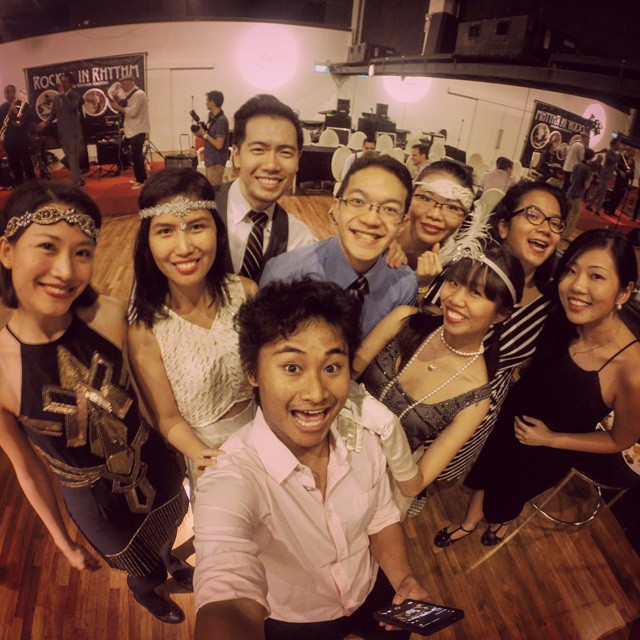
Min (front) with other members of LindyKL at the Singapore Rockin’ in Rhythm workshop in June this year. They usually dress up in “vintage” attire for bigger events like these, but you can come to the socials in workout outfits. — Photo: LindyKL
Anyone can attend such international workshops. Though of course, it is better to first pick up some basic dance skills beforehand, as these workshops can cost up to RM700.
If you’re curious about Lindy Hop, you can check out LindyKL’s Swing Out Loud! at the Ballroom, Jaya Shopping Centre this Saturday, 15 Aug. It’s a party with loads of food, song and dance, and is open to all including beginners and first-timers. All you need to do is register here. Bring your dancing shoes, or in this case – your most comfortable pair of flats!

